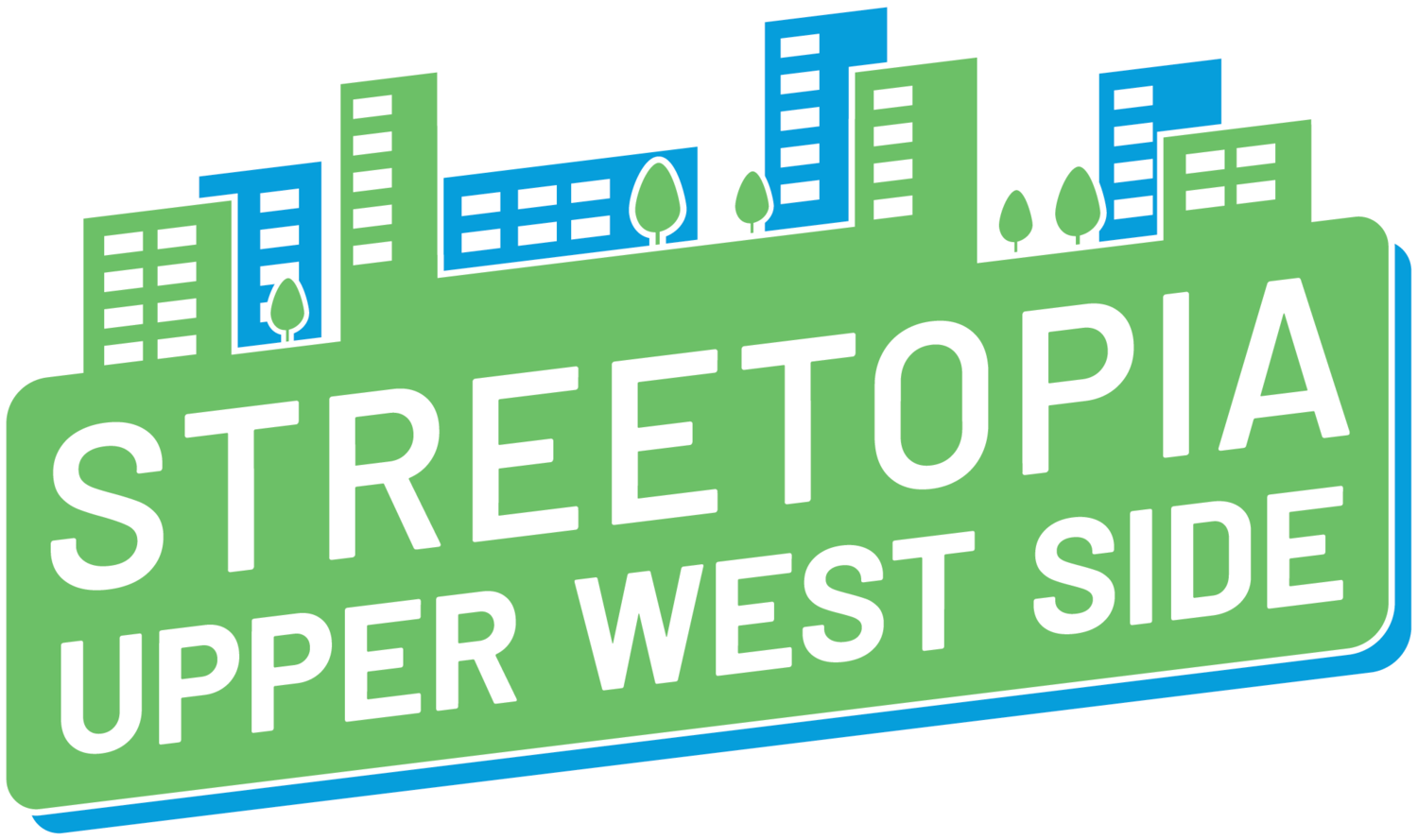Smarter Intersections
Daylighting is a simple pedestrian safety measure achieved by removing curb parking spaces around an intersection, increasing visibility for pedestrians and drivers and minimizing conflicts.
The National Association of City Transportation Officials (NACTO) guidelines suggest clearing 20 to 25 feet of space around a crosswalk, or about one parking spot. New York City’s own Traffic Calming Design Guidelines state that “At crossings that may have low pedestrian visibility, curb extension should be long enough to "daylight" the crossing, i.e., provide open sight-lines to the pedestrian crossing for approaching motorists.”
Drivers hurt and kill people in New York City crosswalks every year. This is true even when pedestrians are crossing with the signal and in a crosswalk, which is the case for the majority of crashes. This very real fear of being hit creates a silent, but potentially even larger effect: seniors and kids lose their ability to move about the Upper West Side freely and independently. While the increased visibility helps everyone—drivers, cyclists, and pedestrians—interact more safely, daylighting especially helps seniors, kids and slower-moving people, who are otherwise blocked from seeing and being seen by oncoming traffic by parked cars. A daylit intersection can mean the difference between a fifth grader who can walk to school or soccer practice on her own and one who can’t experience this developmentally-important graduated independence.
One way to implement daylighting is to install a curb extension or “neckdown” to prevent parking within a certain distance of the intersection. This can be done by building out the sidewalk or with simple bollards and paint. This has additional benefits besides improving visibility. Drivers respond to the narrowing of the road by driving slower, since it feels less safe to speed on a narrow street than on a wide-open street. The expanded sidewalk gives pedestrians more space to wait and shortens crossing distances, which is especially important for people who cross slower like children, the elderly, and people using assistive devices. Or a bike corral can be placed in the space, physically preventing car parking while expanding bike parking for the neighborhood and visually reinforcing that bicycles have a place on our streets. The reclaimed space can also beautify the neighborhood by using it for planters, benches, and bioswales.
Source: StreetPlans Collaborative
Cities across the U.S. are daylighting their intersections. In 2010, Hoboken daylit 38 intersections throughout the City to improve visibility between vehicles and pedestrians. Jersey City has also daylit intersections to improve pedestrian safety.
Source: Streetfilms
Closer to home, daylighting at 97th and West End has made that vital link to the park safer at the cost of only one parking spot, and daylighting at 75th and West End Avenue made neighboring school children safer on their commutes to and from school. Leading the way, Portland’s Bureau of Transportation has updated their design guidelines to call for daylighting at uncontrolled approaches (the legs of intersections that do not have stop signs or signals) to marked and unmarked crosswalks on all pedestrian priority streets. There are opportunities for this life-saving treatment all over the Upper West Side, starting with our most dangerous intersections such as 95th and Amsterdam and 97th and Amsterdam. And, where the city has already daylit intersections with paint and flexible bollards but cars and trucks still routinely park, such as 97th and West End Avenue, or roll over the bollards, such as 96th and West End Avenue or 79th and Riverside Drive, we must reinforce the existing daylighting with strong, permanent infrastructures such as steel bollards or concrete planters.
Being able to explore, meet up with friends, go to school or doctor’s appointments, and enjoy our parks are activities we all value and that all Upper West Siders should be able to do without fear of injury or death. Weighing all these benefits against the space currently used to store one vehicle, the trade-off is easy.




